How I make friends and win work on the internet
Plus why dating and sales are pretty much the same.
You might be surprised to learn that in my twenties I was queen of the dating scene, or rather, queen of first dates, which as far as context goes is relatively important for today’s newsletter.
I went on more first dates than the rest of my friends combined. There was the Kit-Kat guy who stuffed a chunky-chocky into my pocket before running off into the night never to be seen or heard from again. There was Fred from Google who, four wines in, casually dropped that his name wasn’t Fred nor did he work at Google. Then there was the guy who creepily leaned in only to ask if I was curious about what happened after death.
Back then, my thinking was that the more first dates I went on the higher the likelihood of finding my dream man. And while I had some shockers, the terrible dates, boring conversations and unrequited Kit Kats taught me about what I didn’t want in a partner, which in turn directed me towards my perfect match.
We’re now 178 words into this newsletter and you’re probably wondering what my former dating life has to do with winning work on the internet. Well here’s what I know to be true: sales is dating and dating is sales, it’s just the payoff is a payment not a partner. Both involve casting the net wide and stuffing the top of the funnel, qualifying leads and gently nurturing relationships before converting. And just like you’re unlikely to meet your soulmate on your first swipe-right, you probably won’t land a client the first time you pitch. Connections need to be built. Things need time to heat up.
The Sales Process
So how do you find a potential partner (a lead), start dating (warm them up) and get the conversation flowing (nurture towards conversion)? Here’s how I think about it:
Stage 1: Chats and Bants
In dating, unless you’re a creepy guy who dives headfirst into existential questions about death, your first interactions should be lighthearted and without expectation. It’s all about chats and bants and seeing if there’s a vibe. Sales is no different, and when you’ve identified a person of interest your first goal is simply to get on their radar. The best way to do this by sharing and engaging with their content, specifically on LinkedIn. A good commenting strategy is the ‘yes, and’ one, whereby you agree with and build upon the core idea they’ve shared. The goal is to keep it casual and avoid coming on too strong.
After you’ve been chatting in the comments, at some point you’ll want to see if the text banter translates to real life. Do you have what they need? Do they need what you have? Are you a good match? Slide into the DMs and pitch a call to find out.
Stage 2: The First Date
I want to work with people who align with my values (ie. pass the vibe-check) and so I always enter first date convos with curiosity and the intention to listen more than I speak. I ask questions like:
What are you working on right now?
What are the biggest challenges you’re facing in your business / role?
Where do you see yourself needing the most help?
What projects are the pipeline over the next 3-6 months?
If I can add value via a useful insight, relevant introduction or by offering my perspective on a problem they’re facing, then I will. Rather than telling them who I am and what I can do, I show them what I know and how I might help.
PS. I’m noodling on a post about how I run sales discovery calls (which are a tad different to intro calls). Let me know in the comments section if you’d like to read it.
Stage 3: The Slow Burn
A lot of people don’t realise that the sales cycle for fractional, consulting or advisory work - from the moment you first connect to the moment you land work - is 3-6 months. If you land work earlier than that then you probably have the luck fairy on your side. Because of the long sales cycle, staying in touch and actively building relationships is a core pillar of a sustainable portfolio career. Here are a few ideas to keep the spark alive:
Set up a Google Alert (for the company or their name) and be the first to reach out if something newsworthy happens
Comment on their LinkedIn posts using the ‘yes, and’ framework
Post valuable content on your own LinkedIn so you continually pop up in their feed
Share and celebrate their milestones; a new product launch, raising capital, appointment of a new CEO etc.
Invite them to an event you’re attending or hosting
Share a useful article or a podcast episode, particularly if it relates to a conversation you’ve previously had
Proactively make intros
The more thoughtful touch points you have with someone, the more likely it’ll be that they think of you when the time comes to hire or engage.
Stage 4: The Pitch
Just like having the ‘exclusivity’ chat, going in for the pitch is all about timing and preparation. There are a couple of ways to do this:
The general pitch
The general pitch involves, as it sounds, pitching your capabilities and skillset in a relatively generic way. This is my least favourite form of pitching but is still worth testing as I’ve won a number of projects this way. In my experience, you’re more likely to get traction with a general pitch if a) you know the person well or b) already have a strong personal brand and therefore have indirectly built trust.
The tailored pitch
The superior pitching method is the tailored one, which involves proactively reaching out when you see a business opportunity or a problem you can help solve. I’ll pitch to a warm contact (who has cycled through stages 1-3) with a specific and clearly defined way I can add value.
Stage 5: The Close (or Continue)
In an ideal world you’d hear a resounding YES after every pitch, but in the real world that rarely happens. Just like not every ‘exclusive’ chat leads to a relationship, not every pitch will lead to an immediate sale. You might get an outright rejection, a ‘let’s chat more’, or a ‘not right now’. All of these answers have value even though it’s not monetary. They’re data points that will help you tweak your pitch and refine how you present your skills to the world.
Good things take time
It’s easy to forget that the typical consulting, contracting and advisory sales cycle is 3-6 months long, and it’s even easier to feel dejected and like you’re never going to make this portfolio career thing work. But like everything in life, good things take time. Connections must build. Trust must be earned. Opportunities must be unearthed. But if you maintain belief and stay the course, conversations will turn into clients. Proposals will turn into partnerships.
A pitch will become a catch.
🎙️ The two strategies I use to mitigate the looonggggg 3-6 month sales cycle:
❤️🔥 Subscribe for more ideas and frameworks…
…to help you build a financially lucrative and creatively fulfilling portfolio career and life.


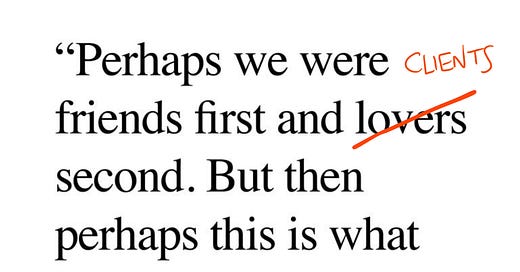



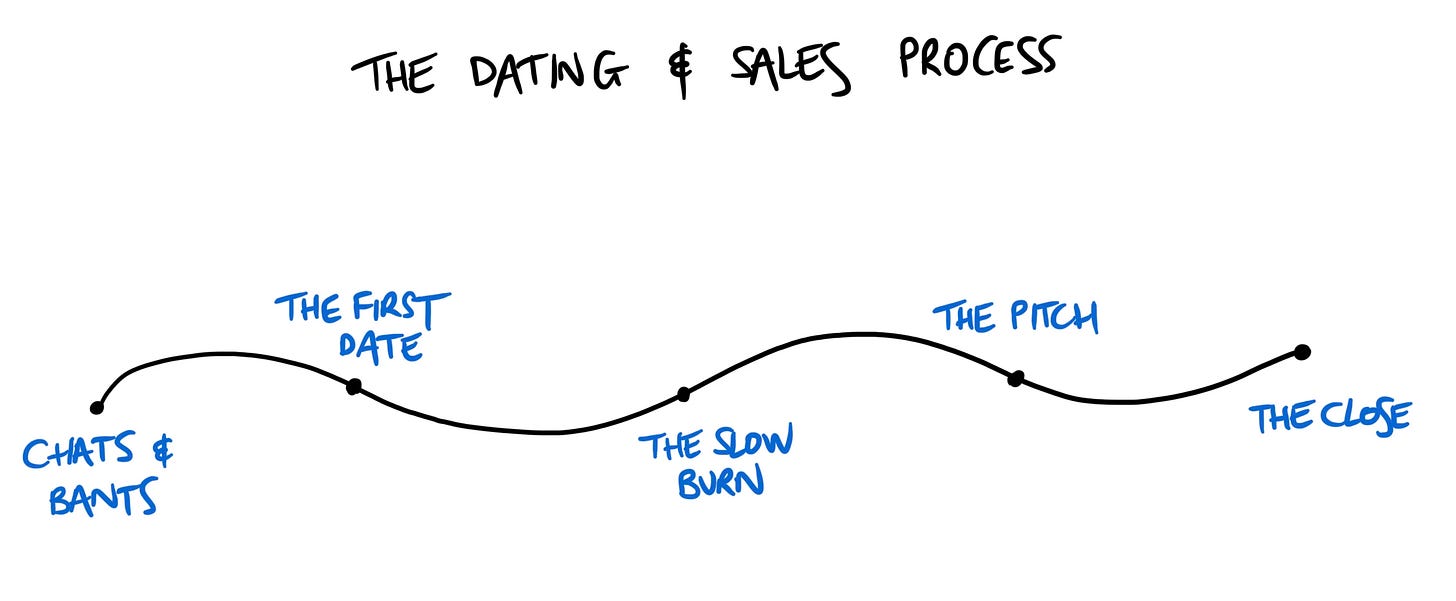
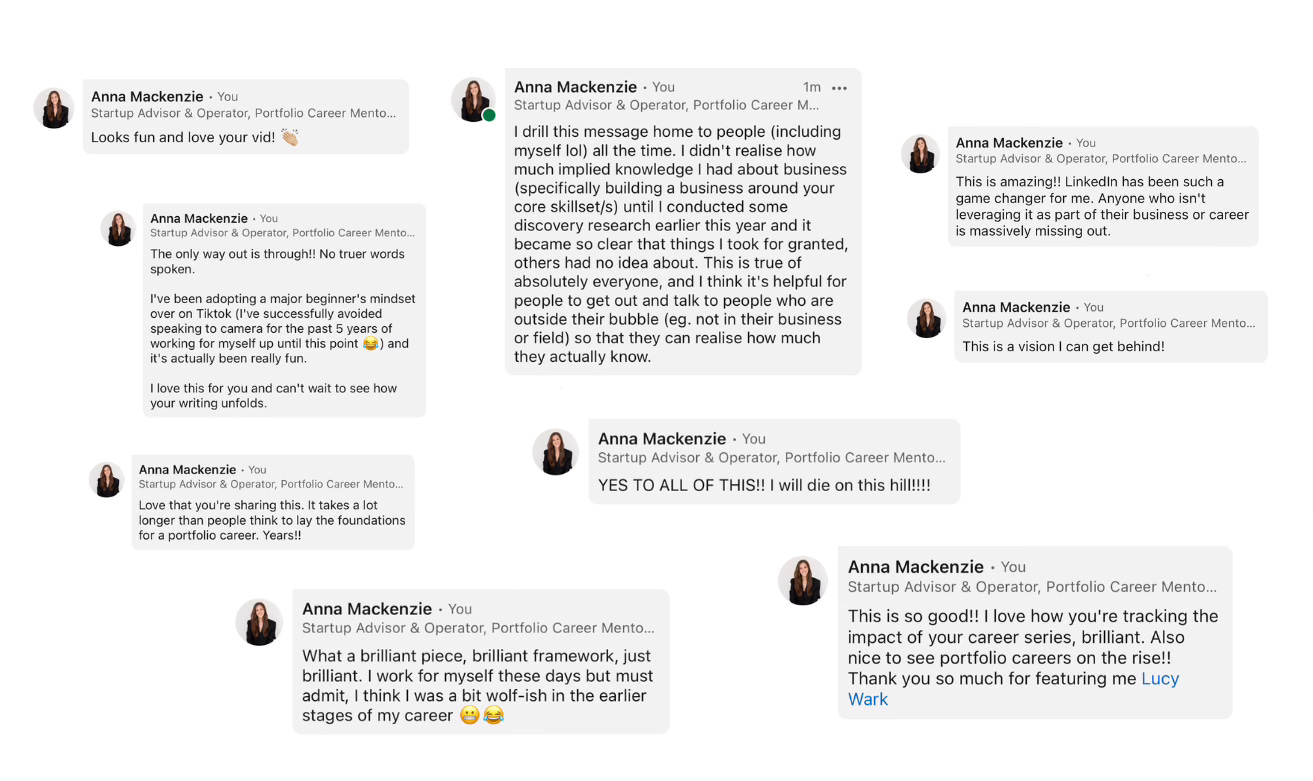
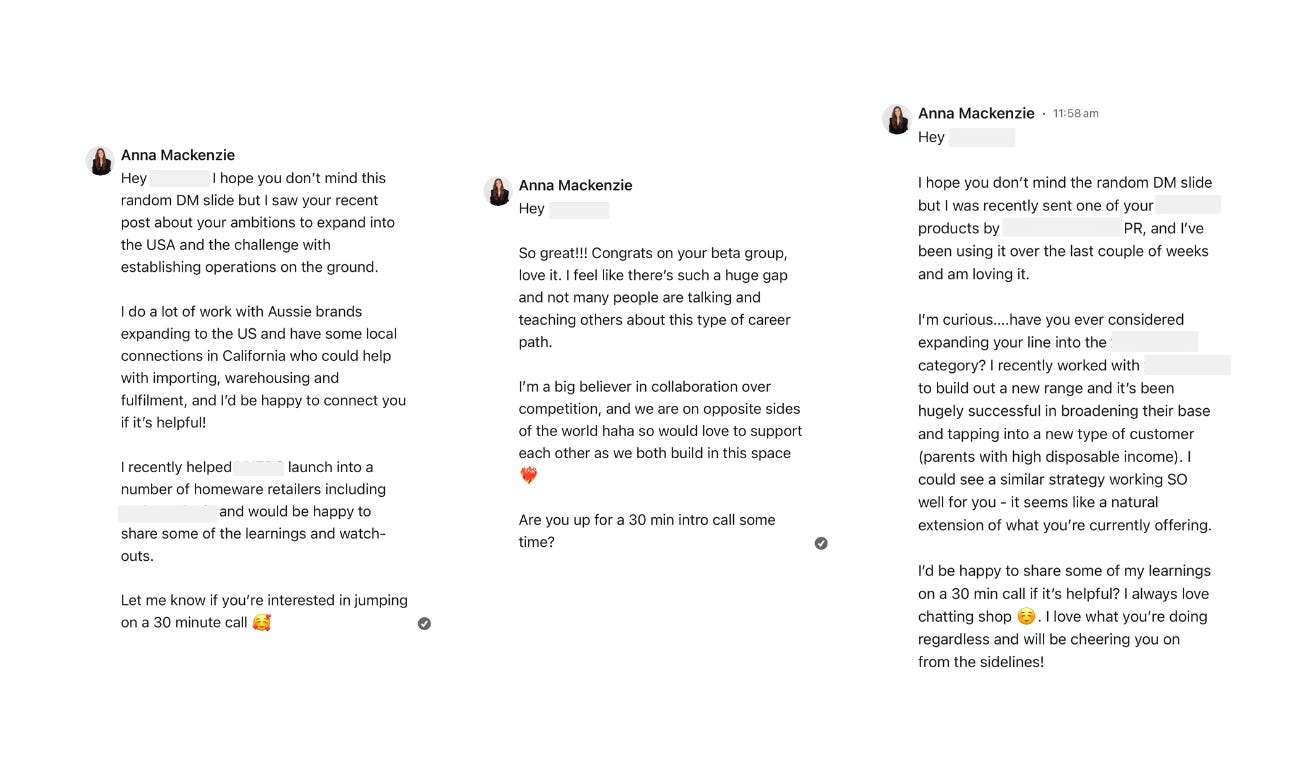

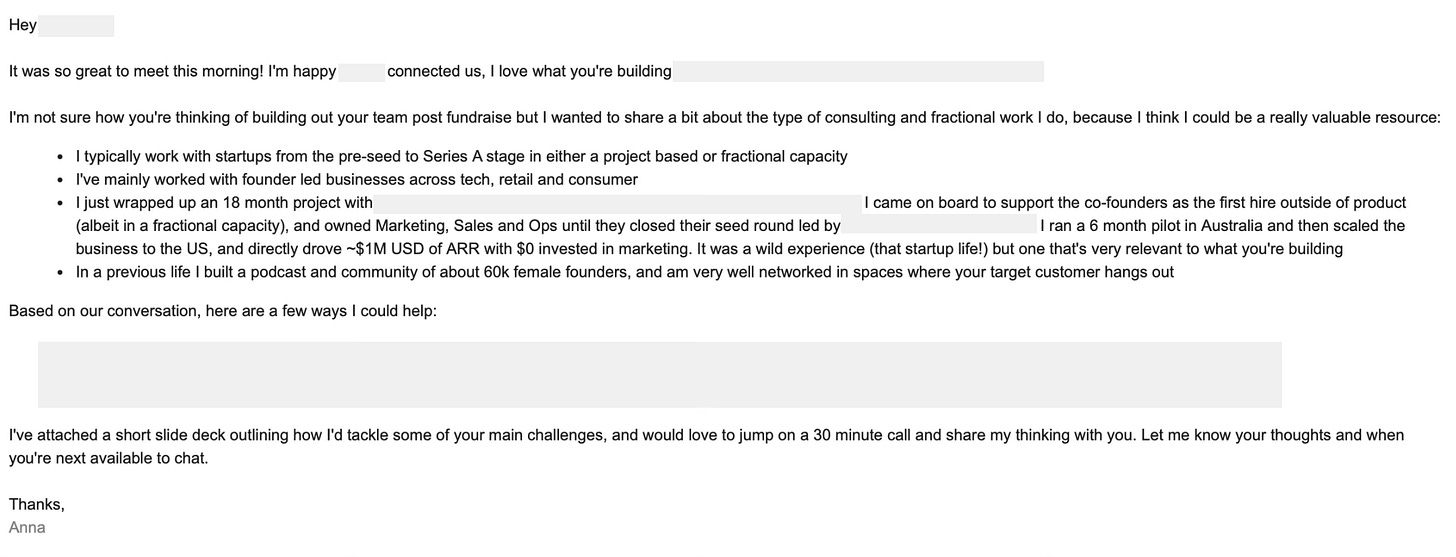

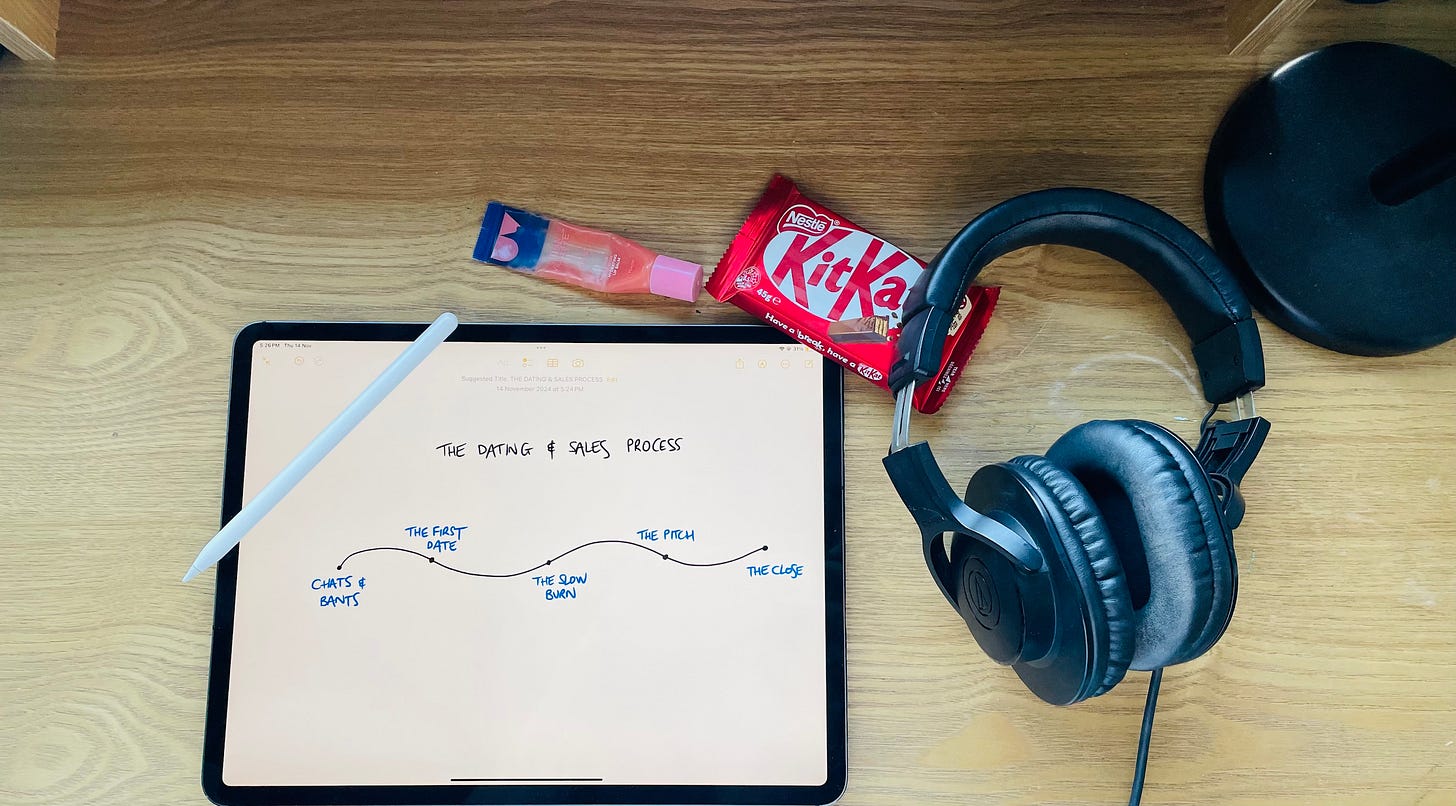
I think I speak for everyone who reads this post when I say that we need more information on the Kit-Kat guy.
I’m interested in hearing more about your sales call process!